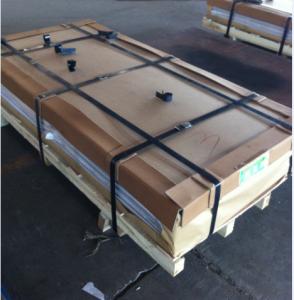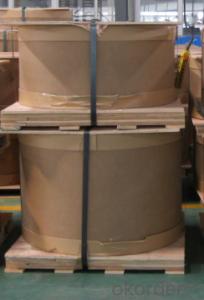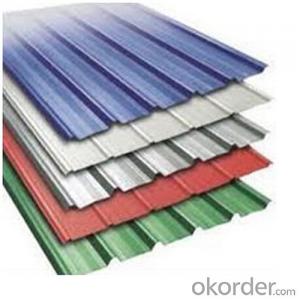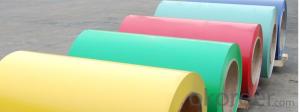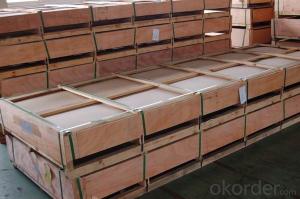Aluminium Hot Rolled Sheet And Alloy Aluminium Slabs
- Loading Port:
- Shanghai
- Payment Terms:
- TT OR LC
- Min Order Qty:
- 6 m.t.
- Supply Capability:
- 6000 m.t./month
OKorder Service Pledge
OKorder Financial Service
You Might Also Like
1.Structure of Product Description
hot rolled aluminum coil, cold rolled aluminum sheet, cold drawn aluminum sheet, hot rolled aluminum sheet, are all widely used in the field of decoration field, etc. 1100-H14, 1050-H16, 1060-H18 are the best-selling grades, etc.
2. Main features of the product
a. Competitive price
b. Frist-Class Service.
c. Shortest service.
3. Image.

4. Product detailed sizes:
1000mm*2000mm, 1219mm*2438mm,1220mm*2440mm, 1250mm*2500mm,1500mm*3000mm, etc.
5. FAQ:
What is the quality standard?
---Usually our standard is GB3880-2006 or others.
What is the length range:
---It is from 2000mm to 6000mm, etc..
Where is your client from?
---Normally it is from Japan, USA, ENGLISH, SINGAPORE, ETC.
What is your mainly products?
---Normally they are aluminum sheet, checkered sheet, mirror finish aluminium sheet, aluminum casting coil, etc.
- Q:How do aluminum sheets perform in terms of machinability?
- Known for their excellent machinability, aluminum sheets can easily be cut, drilled, and shaped using various machining processes such as milling, turning, and drilling. Compared to materials like steel, aluminum has a low melting point and is relatively soft, making it more manageable to work with. Additionally, aluminum sheets offer good chip control, resulting in smaller and more manageable chips during machining. This not only reduces the risk of tool breakage but also improves the overall efficiency of the machining process. Furthermore, aluminum sheets possess exceptional thermal conductivity, effectively dissipating heat generated during machining. As a result, tool wear is minimized, and the life of the tool is prolonged. With their ease of machining and versatility, aluminum sheets find wide applications across various industries.
- Q:What are the different methods of surface etching for aluminum sheets?
- There are several methods of surface etching for aluminum sheets, each with its own advantages and applications. Some of the most common methods include: 1. Chemical etching: This method involves using a chemical solution to selectively remove a thin layer of aluminum from the surface. The solution typically contains acids or alkaline substances that dissolve the metal, creating a textured or patterned surface. Chemical etching is precise and can achieve intricate designs, making it ideal for decorative or aesthetic purposes. 2. Mechanical etching: Also known as abrasive blasting or sanding, mechanical etching involves using abrasive materials such as sandpaper or wire brushes to physically remove the top layer of aluminum. This method is relatively simple and can be done manually or with the help of machinery. Mechanical etching is commonly used to create a uniform matte finish or to prepare the surface for further treatments, such as painting or coating. 3. Electrochemical etching: This method utilizes an electrical current to selectively dissolve the aluminum surface. The aluminum sheet is immersed in an electrolyte solution, and a direct current is applied through a stencil or mask to create the desired pattern. Electrochemical etching is commonly used for marking or labeling purposes on aluminum sheets, as it can produce clear, permanent, and highly precise designs. 4. Laser etching: Laser etching involves using a high-powered laser to remove the top layer of aluminum, creating a permanent and precise pattern on the surface. This method is highly accurate and can achieve intricate designs with sharp edges. Laser etching is commonly used for industrial applications, such as marking serial numbers, logos, or barcodes on aluminum sheets. 5. Photochemical etching: This method involves using a photosensitive material, known as a photoresist, to create a pattern on the aluminum surface. The aluminum sheet is coated with the photoresist, exposed to UV light through a stencil or mask, and then developed to remove the unexposed areas. The exposed aluminum is then etched away using a chemical solution. Photochemical etching is commonly used for producing high-resolution designs or microstructures on aluminum sheets. Each of these methods has its own advantages, depending on the desired outcome and application. It is important to consider factors such as precision, speed, cost, and complexity when choosing the appropriate surface etching method for aluminum sheets.
- Q:Can 101 aluminum sheets be used in aerospace applications?
- Yes, 101 aluminum sheets can be used in aerospace applications.
- Q:Are the aluminum sheets available in different finishes (e.g., brushed, polished)?
- Yes, aluminum sheets are available in different finishes such as brushed and polished.
- Q:Can aluminum sheets be used for HVAC systems?
- Yes, aluminum sheets can be used for HVAC systems. Aluminum is a popular choice for HVAC applications due to its excellent corrosion resistance, lightweight properties, and thermal conductivity. It is commonly used for manufacturing air conditioner coils, heat exchangers, ductwork, and other components in HVAC systems.
- Q:How does the surface cleanliness of aluminum sheet affect its adhesion properties?
- The adhesion properties of aluminum sheet are significantly influenced by its surface cleanliness. Contaminants, such as dirt, grease, or oxide layers, can impede the effectiveness of adhesive bonding with the aluminum sheet. To achieve strong adhesive bonds, it is essential to have a clean and well-prepared surface. When the aluminum sheet is free from contaminants, the adhesive can evenly spread and intimately connect with the surface, resulting in a stronger bond. Conversely, if the surface is not clean, the adhesive may struggle to adhere properly, leading to weak or unreliable bonds. In addition to contaminants, the presence of oxide layers on the aluminum surface can also impact adhesion properties. Aluminum naturally forms an oxide layer when exposed to air, which can hinder adhesive bonding. It is necessary to remove or modify this oxide layer to ensure good adhesion. Surface preparation methods, such as cleaning, degreasing, and treating with chemical solutions, can help eliminate or alter the oxide layer, thereby allowing for better adhesion. Various techniques can be employed to improve the cleanliness and adhesion properties of aluminum sheets. These include mechanical cleaning methods such as abrasive cleaning or sanding, solvent cleaning, acid etching, or even plasma cleaning. The selection of each method depends on the type and extent of contamination present on the surface. In conclusion, the surface cleanliness of aluminum sheet directly impacts its adhesion properties. A clean and properly prepared surface promotes better adhesion by facilitating intimate contact between the adhesive and the aluminum sheet. Therefore, it is crucial to consider and address surface cleanliness when aiming for strong and reliable adhesive bonds with aluminum sheets.
- Q:Are the aluminum sheets suitable for manufacturing automotive fuel tanks?
- Automotive fuel tanks can be effectively manufactured using aluminum sheets. This material is preferred due to its exceptional characteristics, including its lightweight nature, durability, resistance to corrosion, and high strength-to-weight ratio. These properties make aluminum sheets highly suitable for the production of automotive fuel tanks, as they enable fuel efficiency, reduce the weight of vehicles, and enhance overall performance. Furthermore, aluminum sheets can be easily molded and joined through welding, allowing automotive manufacturers to create intricate tank designs while maintaining the tank's structural integrity. Moreover, the low melting point of aluminum sheets facilitates the welding process during tank manufacturing. In conclusion, the utilization of aluminum sheets in the manufacturing of automotive fuel tanks presents a reliable choice that adheres to safety standards and contributes to the efficiency and performance of vehicles.
- Q:Are aluminum sheets suitable for construction purposes?
- Yes, aluminum sheets are suitable for construction purposes. They are lightweight, durable, and resistant to corrosion, making them ideal for various construction applications such as roofing, cladding, and structural components. Additionally, aluminum sheets offer good thermal and electrical conductivity, making them suitable for applications where these properties are required.
- Q:Are 101 aluminum sheets available in different finishes (e.g., brushed, polished)?
- Yes, 101 aluminum sheets are available in different finishes such as brushed and polished. These finishes are achieved through various processes that result in different textures and appearances on the surface of the aluminum sheets. Brushed finishes are created by brushing the surface of the sheet with an abrasive material, which creates a pattern of fine lines. This finish is commonly used to create a matte appearance. On the other hand, polished finishes are achieved by polishing the surface of the sheet to a high shine. This finish is often used to create a reflective and smooth surface. So, depending on the desired aesthetic or functional requirements, one can choose between brushed or polished finishes for 101 aluminum sheets.
- Q:What are the common thicknesses of aluminum sheets used in construction?
- The common thicknesses of aluminum sheets used in construction vary depending on the specific application and requirements. However, some commonly used thicknesses include 0.032 inches (0.81mm), 0.040 inches (1.02mm), 0.050 inches (1.27mm), and 0.063 inches (1.60mm). These thicknesses are often used for architectural applications such as wall panels, roofing, and siding. Thicker aluminum sheets, such as 0.080 inches (2.03mm) and 0.125 inches (3.18mm), are also used in heavier construction applications such as structural components, support beams, and decking. It is important to note that these thicknesses are just examples and can vary depending on the specific project requirements and engineering specifications.
1. Manufacturer Overview |
|
|---|---|
| Location | |
| Year Established | |
| Annual Output Value | |
| Main Markets | |
| Company Certifications | |
2. Manufacturer Certificates |
|
|---|---|
| a) Certification Name | |
| Range | |
| Reference | |
| Validity Period | |
3. Manufacturer Capability |
|
|---|---|
| a)Trade Capacity | |
| Nearest Port | |
| Export Percentage | |
| No.of Employees in Trade Department | |
| Language Spoken: | |
| b)Factory Information | |
| Factory Size: | |
| No. of Production Lines | |
| Contract Manufacturing | |
| Product Price Range | |
Send your message to us
Aluminium Hot Rolled Sheet And Alloy Aluminium Slabs
- Loading Port:
- Shanghai
- Payment Terms:
- TT OR LC
- Min Order Qty:
- 6 m.t.
- Supply Capability:
- 6000 m.t./month
OKorder Service Pledge
OKorder Financial Service
Similar products
New products
Hot products
Hot Searches
Related keywords

